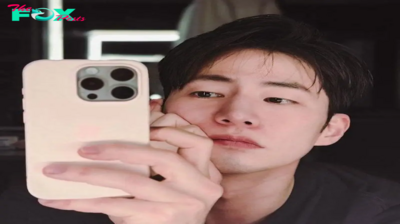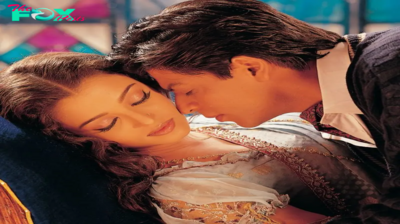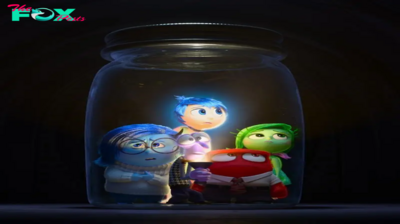Entertainment
Greg Berlanti on Directing Fly Me to the Moon
If you thought we didn’t need another movie about the moon, Fly Me to the Moon might change your mind.
The excitement and intrigue of the Space Race in the 60s lives on with us today. Hollywood isn’t lacking in movies about man’s explorations in space; there are countless, and counting, motion pictures that document the first moon landing and other lunar missions, telling the stories of the people who set foot on it, as well as of the people who helped make it happen. But there’s a new comedy that’s running with a slightly different plot – one that mixes true History with the fake moon landing conspiracy, directed by Greg Berlanti, whose renowned works include television drama You and Love, Simon (2018).
Fly Me to the Moon stars Scarlett Johansson and Channing Tatum, a comedy-drama set against the high-stakes backdrop of NASA’s historic Apollo 11 moon landing. As NASA faces a public image crisis, marketing executive Kelly Jones (played by Johansson) is brought in to stage a fake moon landing as a back-up, much to the annoyance of launch director Cole Davis (played by Tatum).
Prestige gains exclusive access to Greg Berlanti to talk about the new movie, who shares what drew him to the film, the cast, and why directing yet another movie about the moon was important to him.

What was special about this story that made you want to direct it, rather than produce like you more often do?
I’m not a director by nature. I don’t wake up every day thinking “Oh, what am I going to direct today?” You know, I love stories and so I get drawn into certain stories that I feel I would want to see on TV or I would want to see in the movies. And this reminded me of all the movies that I went to as a kid in the seventies and eighties that was just a big screen movie star movie with an original, fun, smart, blend of tones. I loved NASA as a kid. I think I grew up in a generation where everybody still knew the name of all the Apollo astronauts. And there was a real love for what that stood for in American History.
And so that was an amazing opportunity, too. I had watched all the NASA documentaries through the years and really fell in love with the possibility of being a part of retelling one of those stories for the right reasons. And then the last thing I’d say is that it’s a big, fun, entertaining movie, but it was really about something, as well. It was about why the truth is important. And I think in this day and age, that’s a great story to be a part of.
Can you tell us a little bit more about Scarlett Johansson’s character Kelly?
Kelly’s played by Scarlett Johansson and she is a whip smart New York marketing exec with a bit of a past, though we don’t know what that is. She is brought in by Moe, who’s a shadowy person working for a shadowy government agency, played by Woody Harrelson, and he’s brought her in to rehabilitate the image of NASA. In doing that, she conceives of this possibility of how to fake the moon landing. And so at the center of it, you have this love story between a man working on the real moon landing and a woman working on the fake moon landing at the same time.

Let’s talk about Cole and why he’s so passionate about his NASA project. When Kelly comes in, why does it upend his world?
Cole is played by Channing Tatum and he is a true blue American, a man who’s served his country his entire life. As part of that, he represents the half million Americans that worked on the Apollo mission. They couldn’t afford to make a single mistake or a single error. And he was, in his time, representative of the people that were focused just on the mission and not on the sales part of it. But what I always like to say about the Apollo mission at the time was that it took both; It took a bullshit artist, when Kennedy said we’re going to the moon, there was no evidence that we could get there in a decade, but he believed. And it took the individuals that worked every day, inside and out, to achieve that dream.
So he represents, obviously, the truth, and represents the integrity, and belief and what people are actually capable of, and that really changes Kelly when she gets there. Part of her arc is going from this person who thinks everybody’s telling a story and everybody’s selling something to a person who thinks differently.
Can you talk a little bit about Jim, about Anna, and the rest of the cast?
So we have Ruby, Kelly’s assistant, played by Anna Garcia. She’s her “aide de camp”, you know, her sidekick. And she’s also representative of young people in that era who are a lot like the young people today who want to change things. Who feel like the old ways don’t work. So she’s a breath of fresh air going in and is also emotionally there for Kelly throughout. And she sees the change in Kelly and is on that journey with her. I think she adores and respects her boss so much, but then also sees the price of the lie that they’re working on together.
Jim Rash plays Lance Vespertine who’s the director of the fake moon landing. he’s brought in by Kelly and he’s – I think – very representative of a lot of directors. Maybe some people thought that there were some similarities between myself and him, but certainly similar to lot of individuals I’ve met in the Business through the years who are higher strung but very talented and have a real vision for how to pull it off.
Part of the fun of the movie was that we weren’t trying to just make fun of faking the moon landing, but really trying to envision how that would be possible in 1969 with 1969 Technology. And so a lot of the conversations we were having as filMMAkers working on the movie, our characters also had to have. Jim is an amazing improv artist, also, so he was able to generate stuff off the cuff that I would just try and capture on a regular basis. We would spit ball with each other in that way.
Woody Harrelson plays Moe. Obviously, Woody’s an icon. He can play Moe as the kind of character you adore at first and then he can shift as there’s a twist to his character, later in the picture.
And then you have to like him again by the end. So in imagining what actor could set the stakes for a movie like this, of this size, and also still have a fiendish element, but also a funny element and be so likable throughout, there’s really almost no one other than Woody Harrelson that could pull off something like that. And I think he just does it brilliantly. He’s one of the great actors of his generation.
Then there is Ray Romano, who I pursued heavily to play Henry in this. I’ve always wanted to work with Ray. I think he represents so many of the people who also worked on the program, like everyday Americans.
And he’s so much the heart and soul, I think, of NASA in this. He’s very much a father figure to Channing’s character and their interplay just gives a real dynamic element to both of those people as well.

Can you talk about the characters and their chemistry on screen?
You know when you work with stars of this magnitude, who are stars for a reason, they each have a filmic element that most people don’t have. And you do wonder, until they’re in a room together and I’m watching them act together, do they have chemistry that makes me want to go, “oh, what’s going to happen for them?” And, I knew from our first rehearsal. We did about three or four days of rehearsal because I wanted everybody to be comfortable with the script and a lot of things come up in the rehearsal process that you can figure out before the day of shooting, when you’ve got limited light or limited time. They were so inventive and fun with each other.
As the young people say, it was giving Rock Hudson and Doris Day. It was giving Spencer Tracy and Hepburn. They each have their own brand of comedy and their own brand of drama, but they really fit well together. And in a million years, you may never put the two of them together, but then after they’re together, you’re like, of course. I think they have that quality, and it was just fun and exciting to see what was going to happen every day. Then my job just becomes about not letting them bump into furniture, and just making sure that everybody’s just enjoying themselves.
Fly Me to the Moon has high stakes, but there are also comedic moments in it. Can you talk about directing those moments and how you balance those elements?
Yeah, the tone of the movie was one of the trickier things, but it was also the thing that attracted me to the movie from day one. Just to know that we’re going to go to the moon in this movie and we’re going to walk on the moon in this movie, but we’re also going to have a lot of fun interplay between the characters while it happens. That’s where it really reminded me of so many movies that I grew up with from Working Girls to Tootsie that were workplace stories that had stakes, but were also heightened and fun for the audience. I think that’s so much about your actors. It really is about who you cast in those parts. I knew right from the start to work with someone as incredibly talented as Scarlett and that the breadth of her abilities, which are so vast, would just totally set the tone.
And then Channing came on and you know he’s his own comedic and dramatic force and that would add an element. And then every layer we tried to add with each of the actors, every day I want to wake up and I get to work with Ray Romano today. I get to work with Jim Rash today. I get to work with Scarlett and Channing today. And there are going to be those surprises that they’re going to bring you, and you just try and create an environment for them to do that. And then if you’re doing it consistently throughout, you make sure the script’s where it needs to be for that, and you make sure the scenes and the days are there for that. At the end, you have this treasure trove of stuff and then it’s just about, layering it and putting it in the right order and should a laugh come here because the dramatic part came here? and how quickly can you shift that tone for the audience?
I think music’s a big part of being able to do that and I think it’s a day-by-day thing. It goes all the way from the beginning of the first draft of the script all the way through to the last cut and every time you’re showing it to a different audience, and what are you learning about the film then. That’s sort of how the tone is done. It’s not really done with one wide brush. It’s done in these little nuances throughout. But you need the actors. The dream of this was the talent that I got to work with.

Why do people need to see Fly Me to the Moon in a theatre?
For years now, I feel like everyone has been asking for more original stories, rather than just sequels or stories based on other things. And so from the outset, when Scarlett was throwing her weight as a producer and an actor behind this original story, I was so excited to be a part of it. When I was growing up, every weekend you could go to a movie where you didn’t know what was going to happen, you know? And I think the ability to go in, experience this, take a trip back in time is rewarding for an audience.
The “big-screenness” of it is what was accomplished at that time. It wasn’t red or blue. It was everyone working together. You know, a friend of mine said to me after seeing it, “it’s the kind of movie we used to make about the kinds of things we used to do.” And that’s how I feel about the film. I want this nation to be a part of doing more impossible things. So, we made a fun movie about that, that hopefully will entertain people.
You’re making a movie about recreating the moon landing, but you have to recreate the recreation of the moon landing. So what was that like, trying to build that set?
I had the combo platter of feeling very daunted by that because when I grew up, those things were myths to me… like larger than life. The very first photo I bought for my son’s room was an image of Neil Armstrong suit when it was taken off of him, and it was the very first thing I put up in my son’s room years ago before I ever came on to a movie like this. So it’s just part of both the American myth and one of our greatest stories ever told. Maybe it’s arguably the greatest human accomplishment ever that was achieved by these men.
So we wanted to honor all that throughout, but then we also had to achieve what would it have meant to have faked all that and to do that in a way that’s equally realistic. And so from day one in prep, months before we started shooting, we were watching the two and a half hour footage, on loop. And we had stunt choreographers map out every single step that was taken. And so even though there was only five or six minutes of it in the movie, we shot all two and a half hours of everything that happened on the moon surface from almost every angle. We even went through a hundred samples of grains of sand, just so that we could get the right moon dust when you stepped on it.
So it was little details like that to obviously the reconstruction of the LEM. We had a few LEMs because we have a training LEM that we’re in at one period. Then we have the LEM that’s on the fake moon set. We had to shoot all the moon stuff backwards because it was easier to disassemble the set than it was to reassemble it. So there was that element to it. And then there’s the element of figuring out how we’re going to shoot it in a way that the audience understands conceptually what’s going on. That was always in the draft right from the very first script I read by Rose Gilroy, who’s so incredibly talented as a writer. Was this piece de resistance of this third act that was like, is it fake? Is it real? Is it fake? Is it real?
There was the actual coverage of what was happening on the moon. And we use almost all in camera stuff. So we got real cameras from the era. That’s what’s playing on the stage. That’s what’s playing on the broadcast. So we shot it for real. We shot it for real in that era. We shot it for real if it was news footage in that era. It’s all sort of contained. It was a million conversations in prep and in production and in post.
It was a mission! There was a lot that went into it. No day was the same on the set.
Fly Me to the Moon premieres in theatres July 11, 2024.
-

 Entertainment26m ago
Entertainment26m agoAmerica On CoffeeWe’re simply inviting you to take a timeout into the rhythmic ambiance of our breakfast, brunch and/or espresso alternatives. We’re comfortable everytime you cease by.Shoe Shoe Shine – The Dynamic Superiors
-
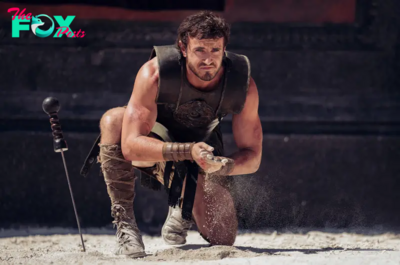
 Entertainment1h ago
Entertainment1h agoHow Gladiator II Connects to the Original Gladiator
-

 Entertainment5h ago
Entertainment5h ago3 Completely different Kinds of TV Appearing Roles
-

 Entertainment5h ago
Entertainment5h agoAmerica On CoffeeWe’re simply inviting you to take a timeout into the rhythmic ambiance of our breakfast, brunch and/or espresso alternatives. We’re comfortable everytime you cease by.SYRUPING UP YOUR VERY OWN COFFEE FLAVORS
-
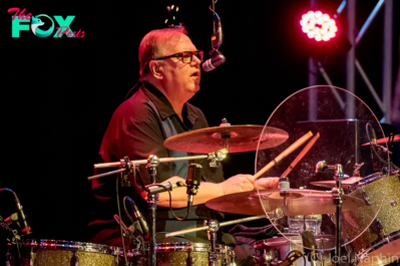
 Entertainment11h ago
Entertainment11h agoThe Smithereens with John Hampson – West Herr Riviera Theatre – North Tonawanda, NY – November 20, 2024
-

 Entertainment16h ago
Entertainment16h agoAmerica On CoffeeWe’re simply inviting you to take a timeout into the rhythmic ambiance of our breakfast, brunch and/or espresso alternatives. We’re comfortable everytime you cease by.Vacation Espresso Cocktail
-

 Entertainment16h ago
Entertainment16h ago12 Methods to Command a Stage
-

 Entertainment18h ago
Entertainment18h agoDid You Correctly Answer This Poughkeepsie Related Jeopardy Question?






